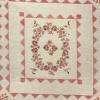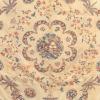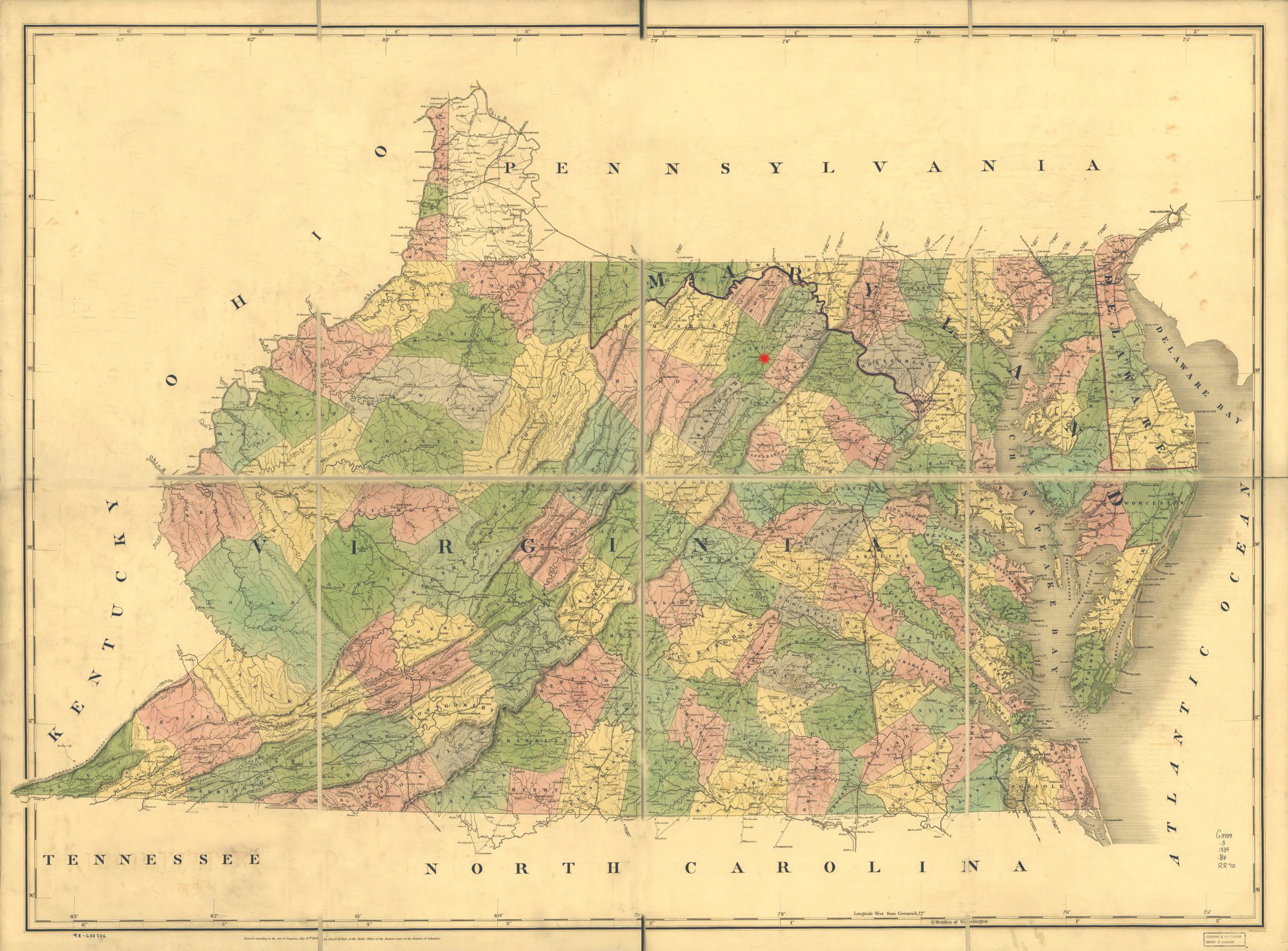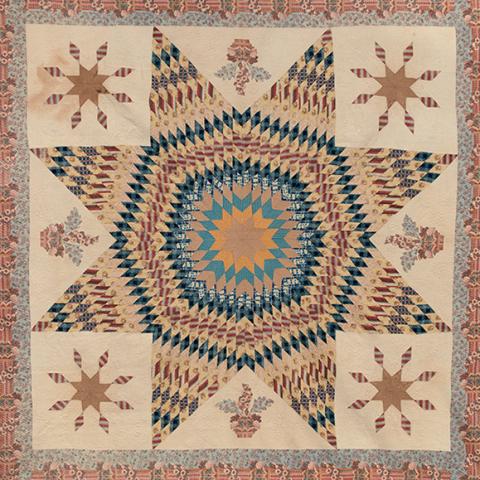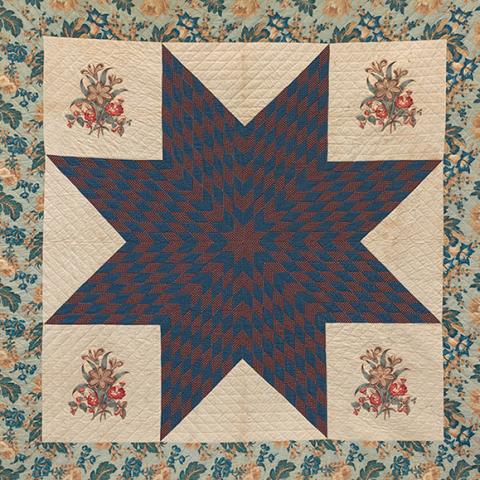The “Delectable Mountains” pattern, used here in a succession of borders, was popular in both Maryland and Virginia. Although Amelia Lauck lived in the foothills of the Shenandoah, there is no connection to the pattern name, which was invented much later.
Amelia gave this quilt to her youngest son, William, and his wife, Eliza. (Look for the inscription “Presented by their Mother to W& EL” in the banner carried by the stuffed eagle in the center medallion). Amelia was a master quilter, but she may have had help from some of the four enslaved women documented in the Lauck household in the 1820 census.
Block printed cotton chintzes, roller-printed resist printed cotton, plain cotton, cotton filling and backing
All of Lauck’s quilts use the same chintzes, one floral print and one with birds, in varying arrangements. This wreath uses mostly the pointy-petaled flowers, while the DAR’s other Lauck quilt uses mostly roses, taken from the same chintz. The other two Lauck quilts use both flowers, and one adds large peacocks.
Amelia Heiskell Lauck
Amelia Heiskell Lauck was the daughter of German immigrants and lived in Winchester in western Virginia all her life. Her husband, Peter Lauck, trained as a potter, served in the Revolution, and afterwards ran the Red Lion Tavern (still standing in downtown Winchester). Of their eleven children, one girl and five boys lived to adulthood. Amelia made at least four masterpiece quilts of similar design for her children; two are owned by the DAR Museum. Amelia Heiskell Lauck by Jacob Frymire, 1801; Reproduction courtesy of the collection of the Museum of Early Southern Decorative Arts, Old Salem Museum & Gardens




